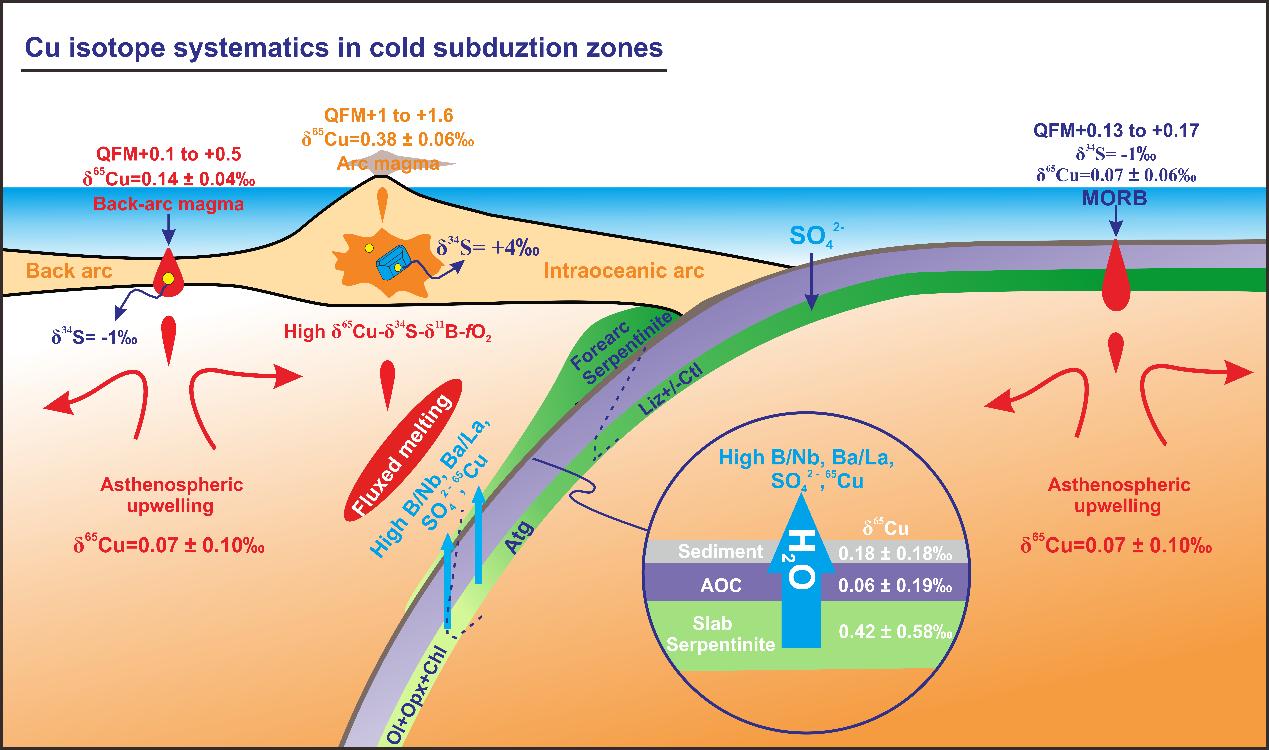
Serpentinite dehydration is essential for water recycling in subduction zones, the released fluids are considered to be a critical component in the oxidation of the sub-arc mantle. However, whether the serpentinite-derived fluids are oxidized or reduced remains hotly debated.
A research team led by Prof. ZENG Zhigang from the Institute of Oceanology of the Chinese Academy of Sciences (IOCAS), together with co-researchers from Tianjin University and the Guangzhou Institute of Geochemistry of CAS, has revealed that a sub-arc mantle from cold subduction zones can be metasomatized by serpentinite-derived sulfate-rich fluids.
Relevant results were published in Journal of Geophysical Research: Solid Earth on Oct. 13.
In this study, the researchers analyzed the copper (Cu) and sulfur (S) isotopic compositions of fresh lavas from three subduction zones in the western Pacific. They found that arc-related lavas had heavier Cu and S isotopic compositions relative to the mid-ocean ridge basalts and back-arc lavas, and their δ65Cu values were positively correlated with geochemical proxies for slab-derived fluids (e.g., B/Nb, Ba/Th, and Ba/La). This evidence suggested that fluids with isotopically heavy Cu and S metasomatized their mantle sources.
Theoretically, the Cu2+-SO42– bearing fluids released by serpentinite dehydration have extremely heavy Cu and S isotope compositions. Therefore, the sulfate-rich fluids infiltrated the sub-arc mantle and produced heavy Cu and S isotopes in arc-related magmas.
In contrast, sulfate-rich fluids were absent at back-arc depths due to the complete breakdown of serpentine minerals during the early stages of subduction, which led to the observation of mid-ocean ridge basalts (MORB)-like δ65Cu and δ34S values (~ -1‰) in the back-arc basalts.
"Heavy Cu isotopes in arc-related magmas uncover that the sub-arc mantle was metasomatized by sulfate-rich (oxidizing) fluids derived from serpentinite, which explains the oxidation properties of arc magmas in cold subduction zones," said CHEN Zuxing, first author of the study.
"This study suggests that Cu isotopes can provide a novel perspective on the oxidized fluids transport during subduction," said Prof. ZENG.
This work was supported by the National Natural Science Foundation of China, etc.

Schematic model showing serpentinite release of isotopically heavy Cu- and S-enriched oxidized fluids into the sub-arc mantle, resulting in fluid-flux melting and arc magmatism. (Image by IOCAS)

86-10-68597521 (day)
86-10-68597289 (night)

52 Sanlihe Rd., Xicheng District,
Beijing, China (100864)

